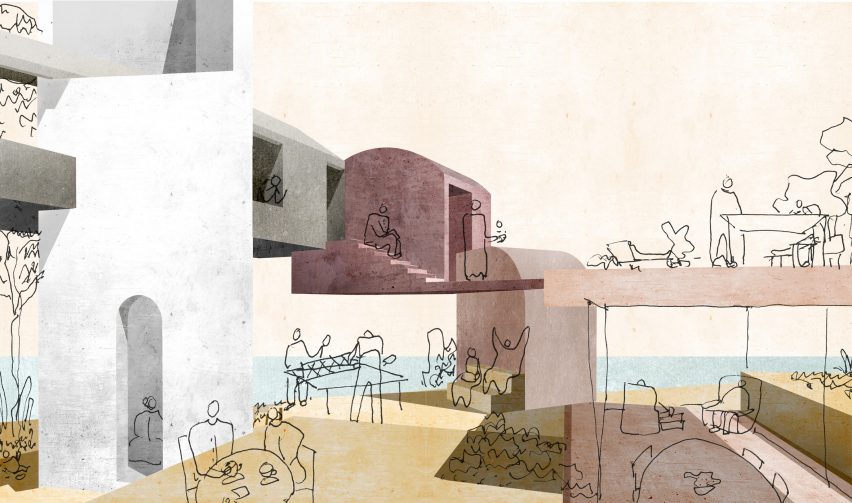
"We banned renders" from the design process says Tatiana Bilbao
Mexican architect Tatiana Bilbao refuses to produce computer visualisations of designs still in progress. She says that making collages helps her to develop more exciting buildings.
Bilbao's work is currently on show at the Louisiana Museum in Denmark. The exhibition doesn't contain any computer renderings; instead designs for projects such as Casa Ajijic and Vivienda Popular are shown through models, sketches and collages.
The architect doesn't like finalised images as they can become obstacles in the creative process. She prefers collage as she believes it fosters a more collaborative approach to design.
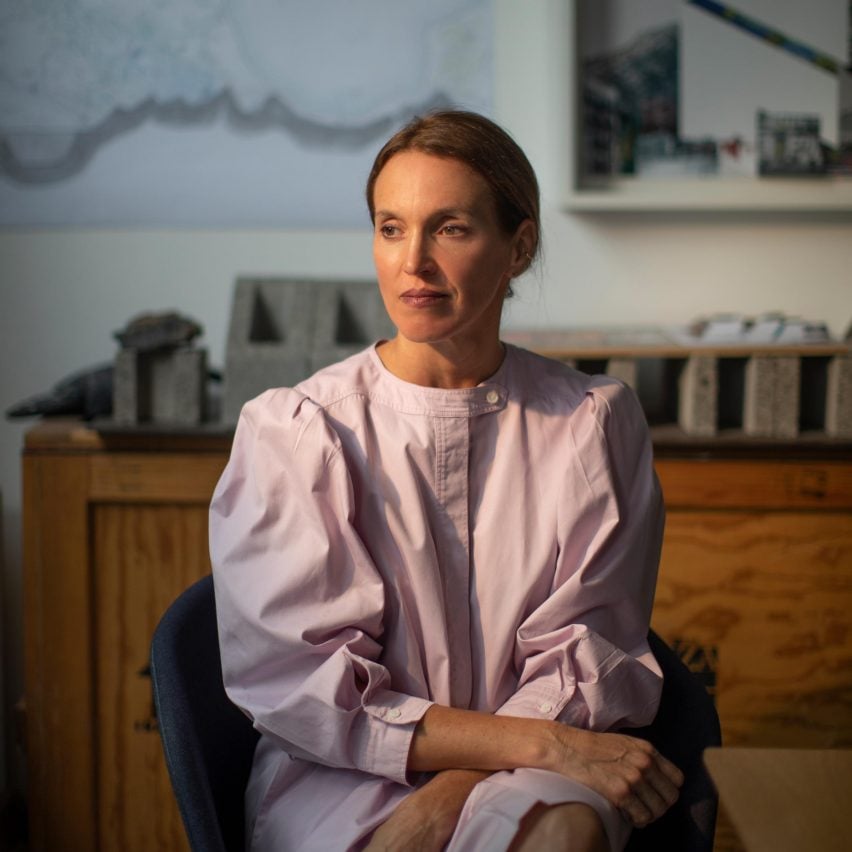
"I want my architecture to be a platform for anyone to create their own way of living," she told Dezeen. "I think a collage accepts all of those personalities, diversities and complexities that are not only my ideas."
"A collage also accepts processes, it accepts mistakes," she continued. "I like to think that our buildings are the same."
Renders "dangerous and damaging"
Bilbao, 47, vowed to stop producing renderings for clients following her first residential project. Her client had been surprised by the result, because he had a fixed idea in his mind based on an early rendering.
"He stopped following the process because he fixed an image into his mind," she explained. "I thought, this could be very dangerous and damaging to the creative process."
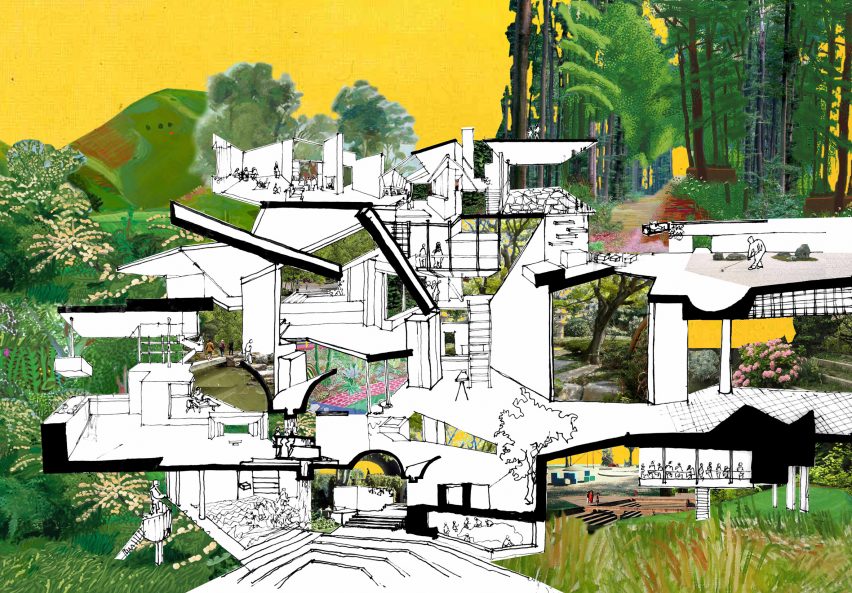
"I totally believe that the process is a dialogue," she continued, "and obviously in that case it became only a monologue, because my mind evolved and his mind stayed with that image."
"After that we banned renders from our process, until the very end," she said.
Collages were "a revelation"
Collages that feature in the Louisiana exhibition include a conceptual floor plan of the Mazatlán Aquarium, which is currently under construction, and a visual of the Culiacan Botanical Garden.
The idea to start using collage came to Bilbao by chance, while working on a proposal for one of her best-known projects, Casa Ventura.
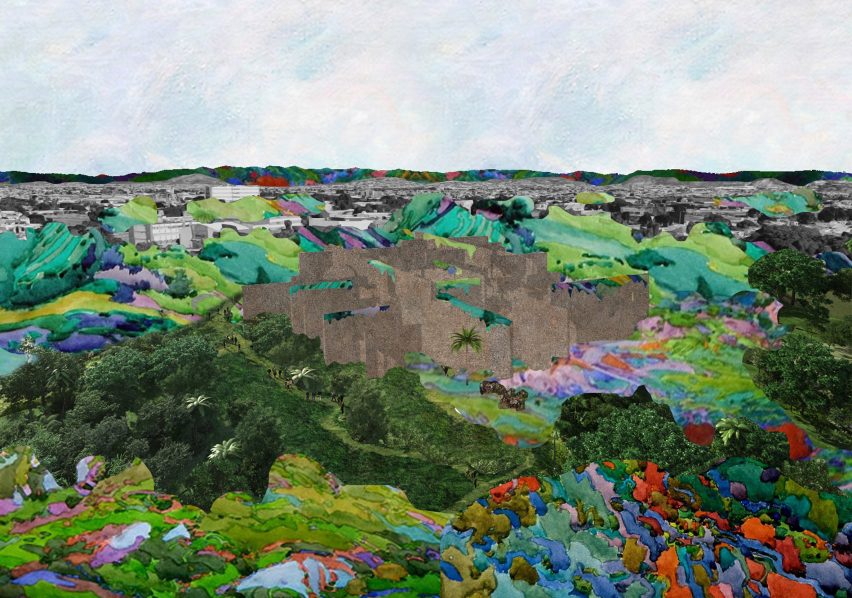
Ahead of a meeting with the client, there wasn't enough time to complete a proper model, so her team improvised. They created a quick foam model, cut it in half, then used Photoshop to turn it into a composite image.
"It was the first collage we made for a client and for me it was a revelation," she said. "Collage became an incredible tool for design with a lot of meanings for us."
Collaboration is key
This collaborative technique epitomises Bilbao's entire approach to architecture. She often likes to involve other creative minds, rather than taking on everything herself.
A key example of this is the Ruta del Peregrino, a project to create architectural interventions along a 72-mile pilgrimage route in Jalisco, on the Pacific Coast of Mexico. Bilbao invited respected names, from artist Ai Weiwei to Chilean architecture practice Elemental, to design different sections.
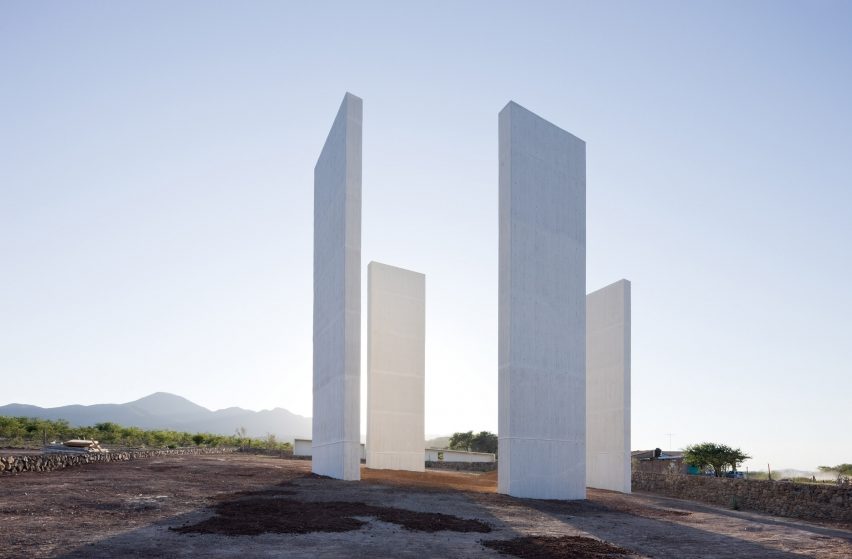
Collaboration is "not just important to me, it's the only way I do architecture", she explained.
"I really can't believe anyone that says they can do useful architecture for a lot of people from one single mind."
Architecture has power to change lives
Bilbao has worked on a variety of different types of projects, but housing is her biggest passion. As well as building luxury homes for rich clients, she has also worked on several prototypes for affordable, mass housing.
The big-budget projects inspire her when she is working on a more restricted scale and budget, she explains.
"I always think that, when you start out thinking on the maximum, you can arrive at incredible places, but when you start with a restriction you arrive at a restricted space," she suggested.
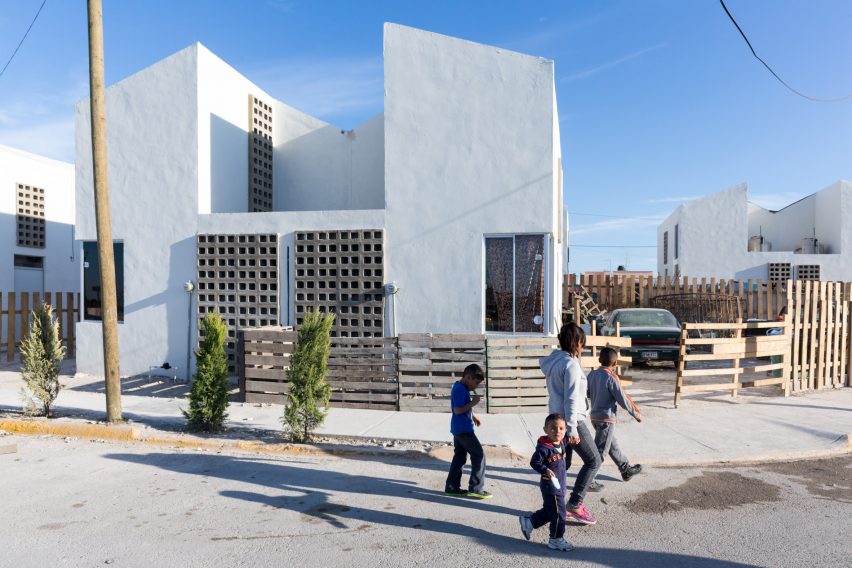
It is Bilbao's firm belief that every citizen has the right to a "dignified and enjoyable house" and, if the government is unable to provide that, then it's down to her as an architect to make a difference.
"I think architecture has the power to impact the lives of others," she said. "I take that very seriously."
Read on for an edited transcript of the interview:
Amy Frearson: Congratulations on the exhibition. I understand you've been working on it for the past two years. What did you want it to say about you and your work?
Tatiana Bilbao: We wanted to create these three environments which are: the mind, the process and the experience of our architecture. That's how I see it.
I really wanted to transmit the message about how we think, how we operate, how we create projects, and our resources for doing them. I hope people get that the process is very complex and it's very different from project to project. We really focus on each project's challenges, context, situation and people. Every project has its own process, its own mind and its own experience. We worry about trying to understand a lot of things, but also about creating an experience that's unique.
Amy Frearson: Can you tell me a bit more about your process? Your residential projects vary between luxury villas and affordable housing. Are you consistent in the way you approach these types of projects?
Tatiana Bilbao: Every design we do is created specifically for the person, for them to develop their own possibilities. My hope is that our architecture brings a certain platform to people's lives, as a source of inspiration to enhance their lives in many ways, whether it's a living space, a public space, an educational space or whatever. It's to allow them to create their own way of living. That is what we're wishing for. That is why every project is completely different to the next, and every project has its own very strange and different process. And we try to to integrate those different ways into the results.
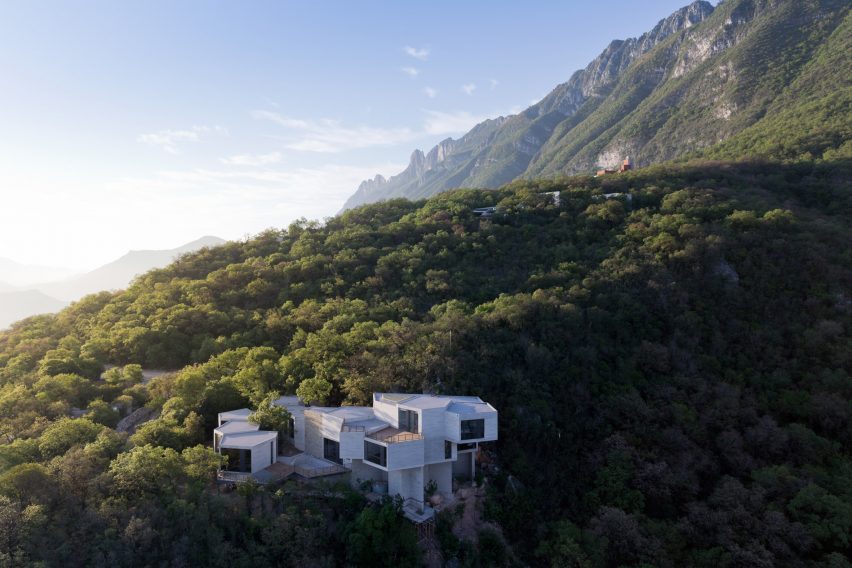
Amy Frearson: The exhibition features a lot of collages. Why do you make these images, rather than renders?
Tatiana Bilbao: It's been a long history in the office and it really is part of the process of our office.
One of the most important phrases I remember from when I was studying was something I read from Rafael Moneo about the understanding of what a piece of architecture does to a city. It stuck in my mind. Every piece of architecture comes into context as part of a collage. Sometimes it becomes the detonator of many things, sometimes it's just one addition, sometimes it gets lost in that complexity, and sometimes it becomes the icon, the new point of reference for that context. I have always thought that my architecture comes to any context, that it adds something to the collage. I have always thought of my work in that way.
Every piece of architecture comes into context as part of a collage
Then, in the beginning, we were having difficulty understanding why we didn't like renders and realistic images. One day, it became very clear. When we finished the first house we built – it was not completely finished but it was almost there – the client said to me, "Tatiana this is not what I thought it was going to be". I asked him why and he started describing the second render he saw of the house during the conceptual process. I realised that he stopped imagining how the house was going to be after that. He stopped following the process because he fixed an image into his mind, as if it was a finished product. And, for sure it had changed completely because that was just a concept.
I started realising why he had never questioned things, he never realised the whole process of the evolution of the design. I thought, this could be very dangerous and damaging to the creative process. I totally believe that the process is a dialogue and obviously in that case it became only a monologue, because my mind evolved and his mind stayed with that image. After that we banned renders from our process until the very end, even though clients would ask to see renders. I would say no, there's models, there's drawings and that's it.
Then we made a discovery, almost by chance. For Casa Ventura, we were in a hurry and we wanted to do a big model but we didn't have the time. So we did a quick foam model that we cut, and then we photoshopped the section model with a photograph. It was the first collage we made for a client and for me it was a revelation. I understood how good it was. So we started really getting into it.
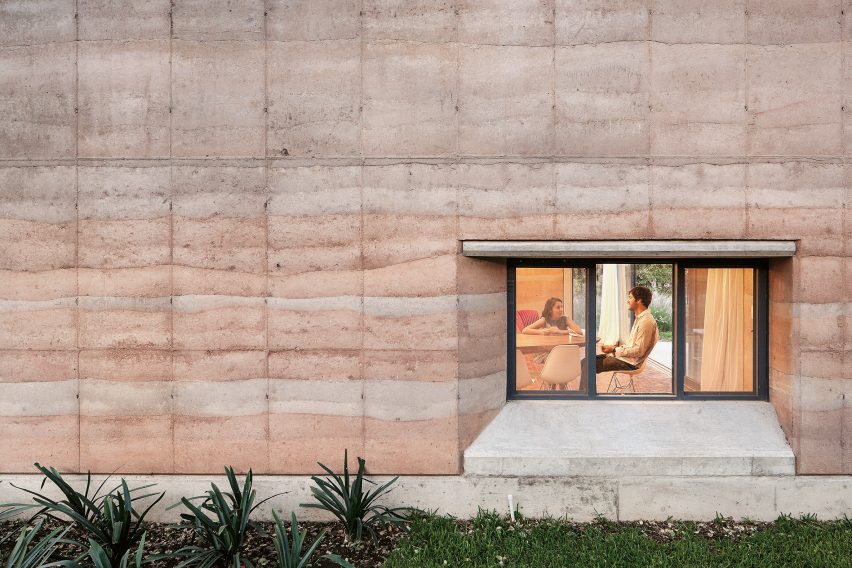
Amy Frearson: So for you, these images really capture the spirit of your design process?
Tatiana Bilbao: As I said, I want my architecture to be a platform for anyone to create their own way of living. I think a collage accepts all of those personalities, diversities and complexities that are not only my ideas. A collage also accepts processes, it accepts mistakes. I like to think that our buildings are the same, so it became very clear that collages were a very good way of representing our buildings.
We presented our first collage for a competition around five years ago. They only asked for one image and it was supposed to be a render, but it was a conceptual idea that they wanted. So we did a beautiful collage. We didn't win the competition – maybe because they didn't like our collage, or maybe our idea was too radical – but what I was really sure was that it was an incredible technique for showing that conceptual idea, and that it proved to be very helpful.
A collage allows a lot of voices to be in one place
Then we were asked to do a house we called Ways of Life. The brief called for a house that would respond to new ways of living, which it described as working and living in the same space. That for me was very strange because we have been working and living in the same spaces for centuries. We only decided after the Industrial Revolution that it was a good idea to divide them. For me, it was more about how the house can allow different ways of life.
We didn't have a client, it was just a proposal. So we decided to think about how we could create this platform for many ways of life, not only our idea of living and not only the general described idea of living. We started creating a chart of emotions and activities that we wanted to do. We were thinking about how space can represent communion between the inhabitants of a house. We started pulling out images and, little by little, more naturally, it started to become this collage. Then we decided to deliberately collage six moments of the house, with images that we found everywhere. When we had the six collages, we collaged them all together, and we started sketching on top of them.
Collage became an incredible tool for design with a lot of meanings for us. A collage allows a lot of voices to be in one place. That has allowed us to develop theories around possibilities of a project but also ways of representing projects.
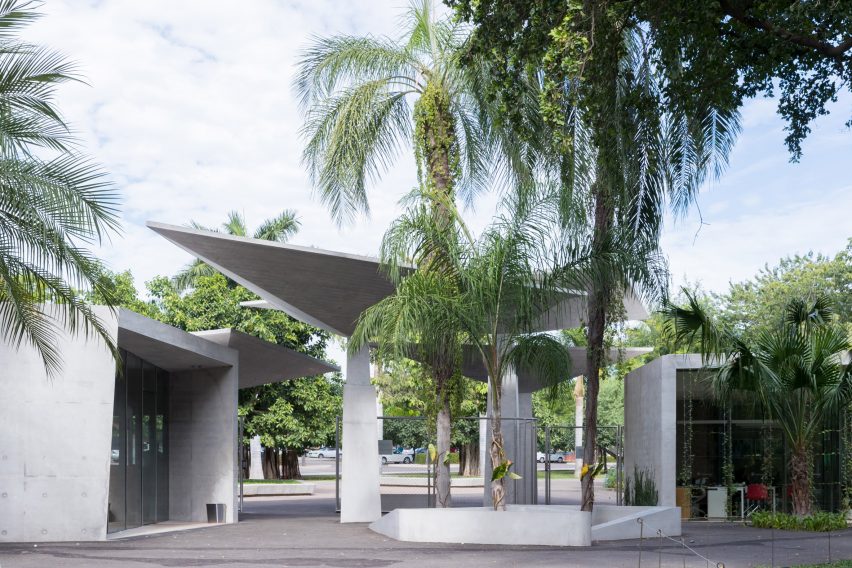
Amy Frearson: You've worked on several collaborative projects in the past, like the Ruta del Peregrino and the Jardín Botánico. Do you think it's important to be collaborative in architecture?
Tatiana Bilbao: I really can't believe anyone that says they can do useful architecture for a lot of people from one single mind. I can't believe someone could say they understand everything, that they have all the tools to design something for someone else. I believe it is really hard to do that translation and I don't believe that you can have all the inputs that you need.
I think that every mind sees things in different ways and that really helps to create incredible input to a project where you're responding to someone else's way of life. It's not just important to me, it's the only way I do architecture. The times when I don't have the chance to collaborate with someone else for any reason, at least it's always a collaboration here in this office, it's a very horizontal way of working.
Amy Frearson: Tell me about some of the affordable housing projects you've worked on. What led you to work in this area?
Tatiana Bilbao: I think architecture has the power to impact the lives of others. I take that very seriously. And if it has that power, why don't we use it? I'm always thinking about why architects are not relevant to society, at least in my society, architects are truly not relevant at all. If you ask someone in the street what an architect is for they might say to fix the plumbing problem in my bathroom or to choose colours in houses. I've heard that before.
I'm always thinking about why architects are not relevant to society
We are very relevant for society in general, because that's how society is able to represent itself in a more general way, in terms of representing a time's history through architecture. But if you speak to an individual, they don't get why it is relevant directly for them. I think it's because we architects have failed to understand that we are able to provide that second most important necessity for a human being, which is living space.
The first most important necessity we have is our health. But the second is to have a refuge. We are not animals that can be living in the wilderness, we wouldn't survive. We have proven, as humanity, that caves are not enough for us. We need a space that is not only a refuge but that is able to allow for and inspire our lives. This is what architecture should be but I think we have forgotten that.
I wanted to be thinking about that all the time, so I decided to work very much in domesticity. And obviously a huge thing in my country is that not everyone has housing. And in my country, housing is one of the constitutional rights, every citizen has the right to a dignified and enjoyable house. Therefore the government has a mandate to provide housing for the people and it's not happening. At least not with the those words, dignified and enjoyable.
I decided to really tackle those issues and started doing research and then a kind of a political activism to change that. It was through by work but also through doing.
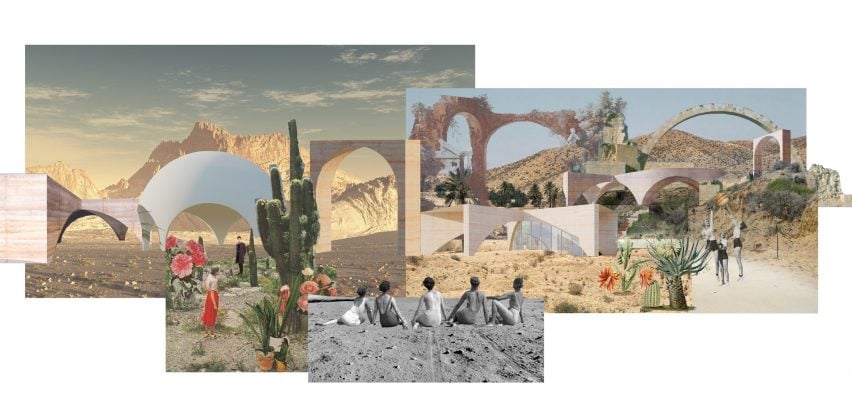
Amy Frearson: The exhibition curator, Kjeld Kjeldsen, describes you as a Robin Hood character, in the way that you use the profits from designing luxury, one-off houses to fund socially driven projects. What you do think about that?
Tatiana Bilbao: It's not my intention to be a Robin Hood. What I can say is that I have had the opportunity of exploring many possibilities when I have had a lot of budget, which has allowed me to understand where the basic ideas are when I don't have budget.
I always think that, when you start out thinking on the maximum, you can arrive at incredible places, but when you start with a restriction you arrive at a restricted space. That's my way of thinking. For me, being able to not just do projects where I need to meet a budget in 43 square-metres of space has allowed me to understand what the most important necessities are in a domestic space. I understand what the most basic things are needed for an inspired way of life, by doing them in places where I don't have a restriction.
I see it as opening possibilities in my mind and for others that maybe they don't have that opportunity of seeing them.
Amy Frearson: So in a way, you take the ideas you develop in high-end commissions and rework them for the masses?
Tatiana Bilbao: I've been trying to do that, as I said, for many years, all my life I think. You would probably call someone an innocent or naive person for thinking that architecture has power, but I do, I do truly believe in it. I do believe that architecture can be a platform for many, many things. And I will not give up.
Amy Frearson: Do you find other architects are receptive to your ideas about collaboration and activism?
Tatiana Bilbao: Well, no. Collaboration is not something that everybody would do. I think there's been so much history of competition. I really find that in the US, where competition is a basic survival tool. Because in the US, not being a welfare state, everything needs to be done by you. So in the end, you really have to compete with everyone to be able to protect your life. Even for your health services, you have to fight. That has been also the basis of capitalism and this is how society shapes us nowadays.
For me, architecture is a way of communicating with others
So I think that when it comes to collaboration, I have found that for some people it's very difficult. They don't understand the basic understanding of collaboration, which is respect and openness to the other one. That is probably the most interesting challenge that I've had in the way I've worked with some people. And with some others it's been very successful.
Amy Frearson: You often use materials in unusual ways. Can you tell me how you choose the materials for your designs?
Tatiana Bilbao: For me, architecture is a way of communicating with others. It's me who starts the first sentence or the first paragraph in the conversation, but then it needs to become a dialogue. I believe the only way that can happen successfully is if that conversation is very honest. So I think that the material needs to also be honest.
We have a very intense process of researching possibilities for each project, of understanding what material is going to allow us to do a building and what it is going to say about it. How does it really communicate our idea? How is it lived and seen?
It is also very important for us to think about where we are and where the material comes from, how can we get it and how we can build with it. That is a very big part of the process as well.
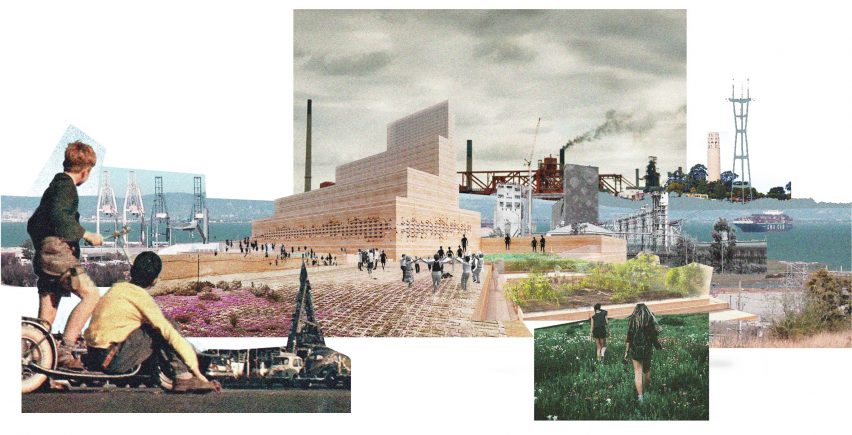
Amy Frearson: Can you give me some examples of how you've chosen materials for some projects?
Tatiana Bilbao: In the botanical garden, for example, it was very clear to us that we needed to use a material that would reflect the spaces, becoming this architecture that is imposed on this very beautiful nature that is in the garden. Through this imposition is the possibility for people to do activities that they cannot do in the exterior. We as human beings need diversity, but also to some point become part of this by dialogue with nature. So we decided to use concrete, as a material that could be everything, the structure, the aesthetic definition, the installation, the acoustic protection, etc. And that would allow us to create these beautiful spaces in one gesture.
We were then asked to create another set of buildings that would not use concrete because it became very expensive to build with. So we decided to use concrete blocks. We used concrete blocks in the same way, to do everything. And we challenged the material to do that.
We as human beings need diversity
In the Ajijic house, we needed to find a material that would allow us to build a very big house, or very big for the budget.
We had to find a material that would allow us to do that. After discarding a lot of them, we looked at what was there in the place. The answer was earth. I had seen another project done with rammed earth so I started researching it and we found a really good way of using this material, when you understand the possibilities of the material. That material allowed us to build this house in the way we wanted.
Amy Frearson: Can you tell me about some of the new projects you have coming up?
Tatiana Bilbao: The aquarium is being built and that's very exciting. Foundations take a long time, but now we are out of the ground rising up, which is a very beautiful moment in construction.
We are working on a church in Monterrey, which is also an incredible project, and we are working on a monastery in in Germany for Cistercian monks, which is a beautiful project. The museum project in Spain is evolving, which is not a museum but more a new model of what a museum could be in the future. We're doing a big residential project in Monterrey which is starting construction really soon, and we're doing a project in St Louis, Missouri, of individual houses.
We are also doing a lot of proposals for a new law that the government wants to pass on creating these quotas for social housing, in the middle of the city. So we're working with them and those proposals. We recently won three competitions and that's very exciting. I'm happy that they haven't started because we have so much work!